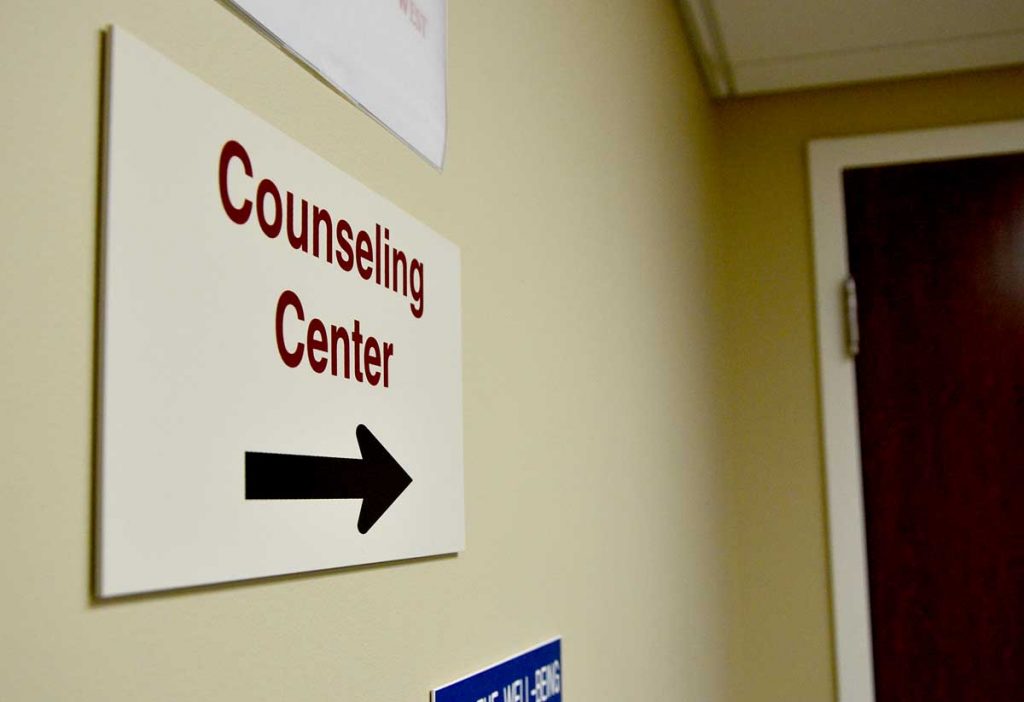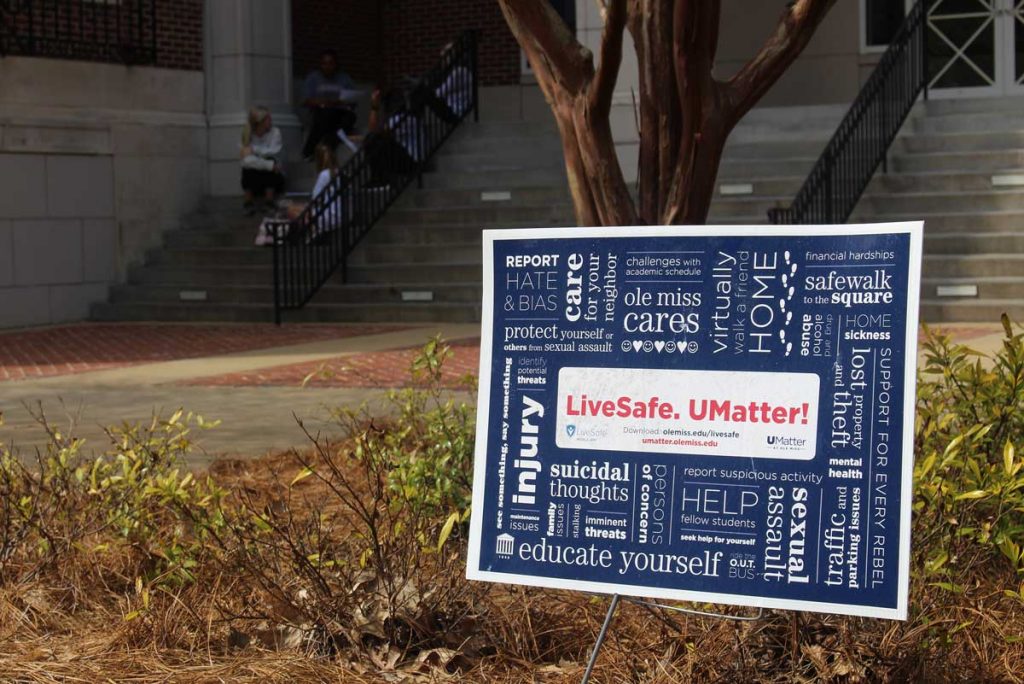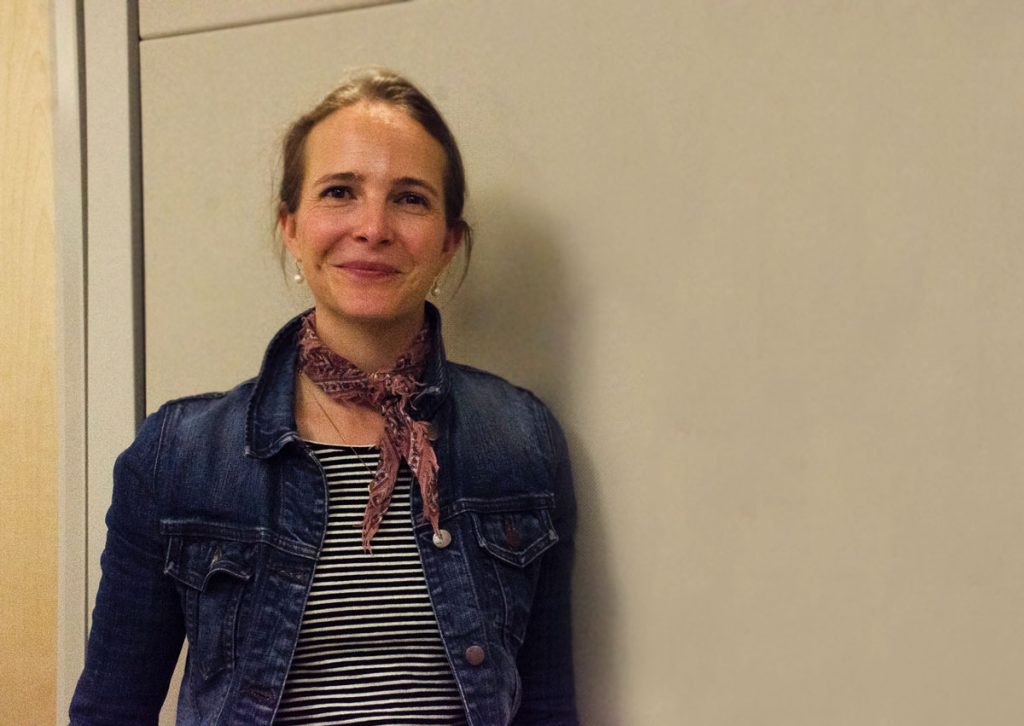The last four years have marked a shift in the university’s approach to providing mental healthcare on campus. If new hires are any indication of where the school’s priorities lie, it seems that mental health education and student services have recently garnered more attention.
Bud Edwards was hired to direct the counseling center in October 2014. Earlier that same year, Melinda Sutton Noss became the first new dean of students hired in nearly 40 years. She brought Kate Forster to campus in 2016 to serve in a newly created position meant to better intervene and connect with struggling students.
This increased administrative focus on mental health is not something unique to Ole Miss, according to Forster, the university’s first and only case manager in the Office of Leadership and Advocacy.
She said many universities had created “case manager” positions around the time Forster herself was hired in order to better link students with the resources they need to be successful.
“It kind of goes back to origins around the Virginia Tech tragedy, when folks realized that there needed to be people in place that are really tracking students that are in distress, students that are facing challenges during their time at the university,” Forster said.

The Counseling Center is located on the third floor of Lester Hall. Photo by Tucker Robbins
Forster said she had only heard of two case managers in the entire country before the 2007 massacre at Virginia Tech, during which a student with a history of mental health concerns shot and killed 32 people and injured dozens more. Now, case managers are common on college campuses, and the profession has its own national organization.
Sutton Noss, assistant vice chancellor and dean of students, had previously worked with positions similar to Forster’s on other campuses. She said Forster’s work is helpful to the university because her office is not bound by the same confidentiality the counseling center is.
“She can make sure to connect the appropriate resources, whereas the counseling center cannot share information,” Sutton Noss said. “It allows us to help a student more proactively.”
Understaffed and overworked
Ask some University Counseling Center employees about the biggest challenge they face today, and they’ll start with their inadequate number of licensed counselors.
The counseling center on this campus is well understaffed, and director Bud Edwards knows it.
Edwards has been a psychologist since 1995 and had been involved on college campuses long before then. He earned his undergraduate degree from Ole Miss in the ‘70s and has seen the university’s mental healthcare needs change dramatically since that time.
“We see more intense cases now of student distress than we did even when I first started in this field,” Edwards said.
The International Association of Counseling Services acts as a leading accreditation association for counseling centers on college campuses. Edwards said Ole Miss is working to become an IACS-accredited campus within the next couple of years, but it would need to double the number of licensed counselors currently on staff.
Edwards said the association’s ideal standard is a 1 to 1,500 ratio of counselors to students on campus. On a campus the size of Ole Miss, a counseling center is expected to have somewhere around 12 professionally licensed counselors. Currently, it permanently employs five.
“We have two people licensed as psychologists and three people licensed as licensed professional counselors on our permanent staff,” Edwards said.

The Counseling Center is located on the third floor of Lester Hall. Photo by Tucker Robbins
One of those professionals took her final exam just last week to earn her full license.
The full set of IACS accreditation standards is a 17-page document outlining ideal qualities of a university counseling center. Mississippi State University is home to the only IACS-accredited counseling center in the state.
Edwards said that because the needs of university counseling centers have evolved so drastically since their inception, the association should be one year away from implementing a new formula for determining its standards.
“I think that a lot of us would acknowledge that we need more staff in the counseling center because there’s often a wait to see staff,” Sutton Noss said. “We don’t want that to be the case, but I think that’s, sadly, a challenge on a lot of campuses.”
The most noticeable change in the campus culture surrounding mental health care is the increased use of student counseling services. Across the board, counseling centers are becoming busier than their staffs are equipped to handle.
“We had probably the busiest fall we’ve had on record,” Edwards said about fall 2017.

A “UMatter” sign in front of Farley Hall advertises the free mobile safety app, LiveSafe, that provides a way for the UM community to communicate directly with UM safety officials and help prevent crimes before they occur. Photo by Italiana Anderson
Edwards said the center’s fall workload increased so much from the year before that he requested additional money from the Office of the Provost to hire a temporary staffer, which Provost Noel Wilkin approved.
That busy semester carried over into the spring, and the student waitlist for counseling sessions now extends into the summer months. With a waitlist of 43 people as of April 3, it’s highly unlikely that the counseling center will be able to see everyone before summer vacation.
“Over the past couple of years, we’ve gotten to a point after Spring Break where, if a student isn’t going to be here in summer, our ability to provide counseling services is compromised,” Edwards said.
A modern approach to self-harm prevention
When mental health care services first arrived on college campuses, there was no focus on outreach efforts such as suicide prevention education. There was no Mental Health Week. There was also no internet.
Kate Forster’s position in the mental health care system relies on the use of technology and widespread communication to identify and support students struggling with psychological or medical concerns on campus.
Forster’s main project in her two years here has been promoting the UMatter system for reporting persons of concern. She’s the only staff member on campus permanently acting as a case manager, which means she’s in charge of reaching out to students who have been reported through the system.
Most universities have one case manager for every 10,000 students, according to Forster. On the Oxford campus, the ratio is 1 to 20,000.
Forster said she is interested both in seeing whether the university’s reporting numbers continue to increase and, potentially, in hiring another full-time case manager. As for now, the responsibility of managing most cases in the UMatter system falls on her and a graduate assistant.
UMatter allows anyone to digitally submit a report on “a member of any UM constituency (faculty, staff or student).” Anonymous reports are accepted, but Forster said that including as many details as possible – even the reporter’s name – is helpful in adding context to the situation.
“Our intervention, hopefully, can be the thing to get that student connected with psychiatric services on campus or with mental health or with the food bank or whatever it may be,” Forster said.
She said that because students are affected by such a diverse set of needs, her office intentionally tries to keep the reporting system as broad as possible. On the person of concern form, users have the option to categorize their report under an array of “Concerning Behavior” and “Medical Issues” from depression to vandalism, and much more.
Forster said that though she has only monitored UMatter data for two years now, numbers across the system have increased significantly. Her office recorded a 24 percent rise in total cases from fall 2016 to fall 2017 and a 68 percent rise between fall 2015 and fall 2017.

Kate Forster, the case manager for the Behavioral Intervention Team in the Office of Leadership and Advocacy, in Minor Hall on Friday. Photo by Italiana Anderson
“I think it’s probably that people know where to report it now, which is a good thing, even though the increase in numbers might sound concerning,” Forster said.
Forster often refers people to visit the University Counseling Center, but she said she’s aware of the staffing deficit that has come to define campus counseling.
“I know they’re highly utilized, very highly utilized, and there are different points in the semester with waiting times for students, but they always have walk-ins available,” Forster said.
In an attempt to reach more students in the last few years, Ole Miss has begun offering treatment options besides those offered by the counseling center.
One of these options, the UM Counselor Education Clinic for Outreach and Personal Enrichment, was introduced in 2015 to expand existing child therapy resources to college students and adults.
Forster acknowledged that campus counselors can become “really busy, really quick” and said the counseling center can also refer students to campus options including the clinic, if needed.
“I think, overall, across the country, there’s just a trend of increasing concerns with mental health on campuses,” Forster said. “There’s more access; more and more students are coming to college campuses with more complicated diagnoses, histories or situations, so there’s more of a need.”
Normalizing the mental health talk
The common message coming from both Forster and Edwards is that it’s natural for college students to struggle with their mental health. Many new students are adjusting to life on their own for the first time while simultaneously experiencing new mental conditions.
“From a developmental standpoint, this time frame is probably second in significance to the first five years of a person’s life in terms of the dramatic developmental processes,” Edwards said.
He said if students do not learn the skills needed to manage anxiety, stress or depression after arriving on campus, they will likely need somebody to help them hone those skills.
Edwards said acknowledging that students are going to be feel more anxiety in the weeks before midterms and more depression before the holidays is a step forward.
“The folks I know and talk to, they know this is a problem, and they want to do good for their students,” he said.
Sutton Noss receives reports whenever any current student or student who recently left the university dies. She has the responsibility of making an effort to reach out to these students’ families.
“A lot of time, people don’t think of college students passing away, but, sadly, that is part of our work in dealing with some of that, but we don’t want that to happen, so we try to be preventative when we can be,” Sutton Noss said.
Edwards said the Ole Miss community must become comfortable talking about the factors that often lead to mental health concerns or suicide. He said being good at suicide prevention means also being good at helping students make healthy decisions about substance abuse.
“Our Ole Miss students tend to drink differently than other students. Our own research through health promotions tells us that,” he said. “So addressing some of the unique pieces of that and getting students to have buy-in (helps) those of us who are trained professionals get access to and reinforce our efforts.”
He said the Ole Miss trends of mental health concerns and suicide rates aren’t unusual among university populations and the social nature of a college campus lends itself to students feeling more connected to others who have died of suicide.
“On a college campus, we kind of feel that little more intensely, but I don’t think our numbers are any different. We’re seeing a little bit of a rise in suicides among traditional college-aged people. I think a lot of that is driven by suicides among the LGBT population,” Edwards said.
He said part of the counseling center’s efforts this fall will involve reaching the LGBT population on campus. The counseling center currently offers both a trans student support group and LGBT support group.
“The university could not hire enough staff members to have a huge impact on suicide prevention and reduction,” Edwards said. “That’s going to take the students themselves taking up a pretty big role, a strong role, in helping identify people who are at risk.”






